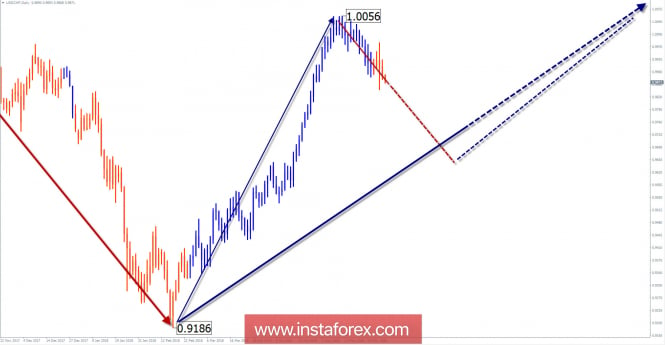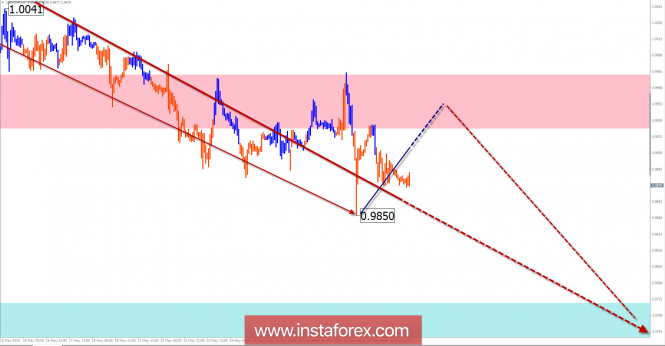The wave pattern of the D1 graph:
On the daily scale of the Swiss currency major, the dominant wave is directed downward. In a larger model, this section of the graph closes the correction part (B). The subsequent counter-rising movement has the potential for a reversal.

The wave pattern of the H1 graph:
In the bullish wave of February 16, the price was adjusted for the whole last month. The wave is not complete. By now it has reached the smallest possible size, but the structure has not yet completely formed.

The wave pattern of the M15 chart:
In the framework of the main downward wave, a counter-roll began to form from May 29. In the coming days, its completion is expected.
Recommended trading strategy:
When trading large sections of the schedule, traders need to wait for the completion of the entire bearish correction. With inter-dynamic trade style from the resistance zone, short-term sales are possible.
Resistance zones:
- 0.9930 / 0.9980
Support zones:
- 0.9770 / 0.9720
Explanations to the figures:
A simplified wave analysis uses a simple waveform, in the form of a 3-part zigzag (ABC). The last incomplete wave for every timeframe is analyzed. Zones show the calculated areas with the greatest probability of a turn.
Arrows indicate the counting of wave according to the technique used by the author. The solid background shows the generated structure and the dotted exhibits the expected wave motion.
Attention: The wave algorithm does not take into account the duration of the tool movements in time. To conduct a trade transaction, you need to confirm the signals used by your trading systems.
The material has been provided by InstaForex Company - www.instaforex.com